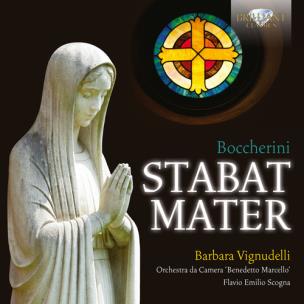- Regulamin
- Koszty dostawy
- Kontakt
- Dziś w ofercie 237 851 produktów
KSIĄŻKI
- Albumy
- Beletrystyka
- Biografie
- Dla dzieci i młodzieży
- Edukacja
- Ekonomia i biznes
- Ezoteryka
- Historia
- Informatyka
- Kalendarze
- Komiksy
- Kryminał i sensacja
- Kultura i sztuka
- Literatura faktu
- Literatura kobieca
- Literatura piękna
- Medycyna
- Nauka języków obcych
- Nauki humanistyczne
- Nauki przyrodnicze
- Nauki ścisłe
- Podręczniki
- Poradniki
- Prawo i administracja
- Przewodniki i podróże
- Psychologia
- Religia
- Sport
- Technika
- Zdrowie i uroda
ZABAWKI
- Artykuły dla niemowląt
- Bączki
- Bujaki i skoczki
- Ciągnij / pchaj
- Dla niemowlaka
- Grzechotki i gryzaki
- Karuzele i pozytywki
- Maty i centra zabaw
- Projektory i lampki
- Sortery i piramidki
- Zabawki
- Edukacyjne i kreatywne
- Figurki
- Klocki
- Lalki
- Pojazdy
- Pluszaki i maskotki
- Sport i rekreacja
- Zabawa w dom
- Zabawki drewniane
- Puzzle
- Do 200 elementów
- 201-500 elementów
- 501-1000 elementów
- Ponad 1000 elementów
- Puzzle 3D
ART. PAP
- Artykuły biurowe
- Artykuły piśmiennicze
- Bloczki i kartki samoprzylepne
- Dziurkacze
- Kalkulatory
- Nożyczki i nożyki
- Skoroszyty
- Teczki
- Wizytowniki
- Zszywacze
- Artykuły szkolne
- Akcesoria szkolne
- Modelowanie
- Notatniki i zeszyty
- Piórniki
- Plecaki i torby
- Pojemniki na śniadanie
- Pomoce naukowe
- Przybory matematyczne
- Przybory rysunkowe
- Upominki i gadżety
- Akcesoria do książek
- Artykuły balowe
- Breloki i zawieszki
- Drobiazgi, różności
- Kubki
- Oferta Świąteczna
- Papeteria, kartki i naklejki
- Skarpetki Many Mornings
- Upominki
GRY
MULTIMEDIA
- Audiobooki
- Beletrystyka
- Biografie i wspomnienia
- Dla dzieci i młodzieży
- Fantastyka
- Filozofia i religia
- Historia
- Literatura faktu i reportaż
- Poradniki
- Sensacja i kryminał
- Filmy DVD/BD
- Animowane
- Biograficzne
- Fantasy
- Horrory
- Komedie
- Romanse
- Science Fiction
- Sensacyjne / kino akcji
- Thrillery
- Muzyka CD
- Alternatywna
- Blues
- Dla dzieci
- Jazz
- Klasyczna
- Piosenka aktorska i poetycka
- Pop
- Rock
- Świąteczna i kolędy
- Akcesoria GSM
- Głośniki
- Kable i adaptery
- Klawiatury
- Myszy
- Słuchawki
PROMOCJE
ZDROWIE
LEGO

Boccherini: Stabat Mater
Wydawca:
Brilliant Classics
EAN:
5028421944944
oprawa:
Plastikowa
format:
14.0x12.0cm
język:
angielski
rok wydania:
2005
(0) Sprawdź recenzje
Opis produktu
Zasady bezpieczeństwa
The French violinist and composer Jean-Baptiste Cartier once said: 'If God wanted to speak to man through music, he would do so through the works of Haydn; if he wished to listen to music himself, he would choose the works of Boccherini.' Often considered the finest Italian composer of the Classical era, Luigi Boccherini was not party to the Viennese school of music which was in vogue at the time, and therefore his compositions retain that unmistakable Italian flair, but with modest and subtle brilliance.
His Stabat Mater -- written in 1781 and scored for small forces of just soprano and strings -- exudes elegance and beauty. While bearing the influence of the Stabat Mater of Pergolesi from 45 years earlier, Boccherini's composition often delves into the realms of the operatic, thanks to arias such as the passionate and dramatic 'Quis est homo' and the agile 'Cujus animam gementem'.
The Stabat Mater is sung by Italian soprano Barbara Vignudelli, international performer and prizewinner, widely acclaimed for her interpretations of both sacred music and opera. She is joined by the musicians of the Orchestra da Camera 'Benedetto Marcello', which is directed by Flavio Emilio Scogna.
Other information:
- That Luigi Boccherini is not the composer of "pretty and harmless tunes" is shown by his Stabat Mater, a dramatic and eloquent musical setting of the lament of Mary at the Cross. Long in the shadow of its predecessor by Pergolesi, Boccherini's Stabat Mater has moments of the most intimate beauty and heartfelt sorrow.
- Sung by the great Italian soprano Barbara Vignudelli and the Orchestra da Camera Benedetto Marcello conducted by Flavio Emilio Scogna.
- The booklet contains notes on the composer and the music and the sung texts.
CENA:
21,14
zł
Cena detaliczna:
24,99 zł
15%
rabatu
Najniższa cena z ostatnich 30 dni: 21,14 zł
Produkt niedostępny
Uwaga!!!
Ten produkt jest zapowiedzią. Realizacja Twojego zamówienia ulegnie przez to wydłużeniu do czasu premiery tej pozycji. Czy chcesz dodać ten produkt do koszyka?


Wybierz wariant produktu
